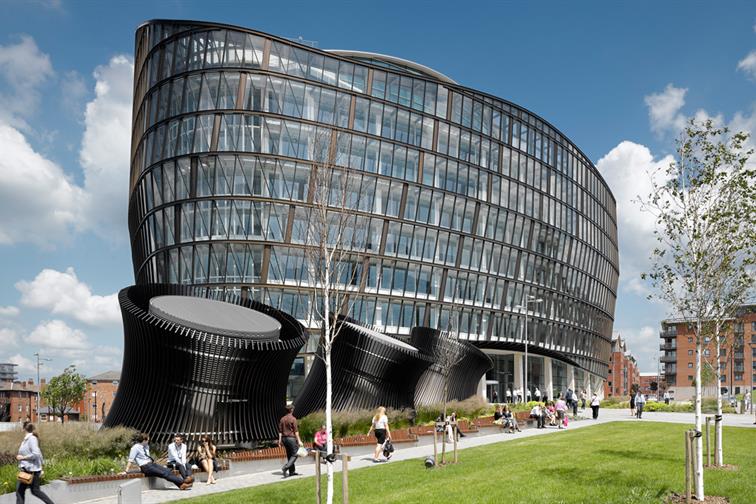If you’re a Manchester resident, you’ll be familiar with the all-singing, all-dancing, brand-spanking-new Co-op headquarters. In much the same way that London’s City Hall squats on the banks of the Thames, One Angel Square looms over Victoria Station, its solid glass bulk in stark contrast to the company’s iconic 1960s CIS Tower just over the way.
The UK’s largest building when it was completed in 1962 (this title was later claimed by the capital’s Millbank Tower), the former home of The Co-operative Group is a relic of a bygone age. To step inside is be transported back to the grey vision of mid-20th century town planners. Once a jewel in Manchester’s architectural crown, it is now a depressing reminder of the Co-op’s fall from grace.
Pity the Co-op. From the disastrous tie-up with Britannia Building Society in 2009 and the millions set aside for payment protection insurance mis-selling to the scandal surrounding its former chairman Paul Flowers and its woeful financial strength, today’s Co-op is a far cry from the The Co-operative Wholesale Society. God only knows what that small group of Rochdale Pioneers, who founded what we know now as the Co-op in 1844 on Toad Lane, would have to say.
This morning the Co-op Bank reported its fifth consecutive year of losses and warned of more branch closures and job losses. OK, the bank is just one part of the Co-op group (the larger business is now a minority shareholder) but it’s a really important element. Having put itself up for sale last month, it now transpires that 2016 saw a loss of £477 million – taking its cumulative losses to £2.6 billion – and the bank spelt out that it would seek £750 million of new capital if it could not find a buyer.
There’s a lot at stake, not least the Co-op’s proud history and ongoing commitment to ethical principles. In total, the Co-op Bank has £20 billion of loans, 1.4 million current account customers, 4,000 staff and 105 branches, down from 294 five years ago.
Nevertheless, the bank continues to attract new customers: it added 4,147 current accounts during 2016. In addition, the overall financial loss was not as deep as the £610 million recorded in 2015. And there’s some cheer to be had from the fact that it’s been told by the Financial Conduct Authority that it now meets threshold conditions on IT.
But every time I pass One Angel Square, lauded on its completion in 2013 as the greenest building in the world, I wonder if this £100 million building (part of a much bigger £800 million development in a formerly unloved part of Manchester) is really a symbol of everything the Co-op has done wrong. Lavishing millions on a new building when it owns property all over Manchester? Was that really a good idea when, at the same time, the organisation was drowning in bad debt and reeling from dreadful management decisions? It has yet to find a buyer for the CIS Tower (which has a reported asking price of £50 million) and is yet to find a buyer for the bank. But there’s a lovely shiny headquarters to drool over.
Helen Nugent is Online Money Editor of The Spectator






Comments